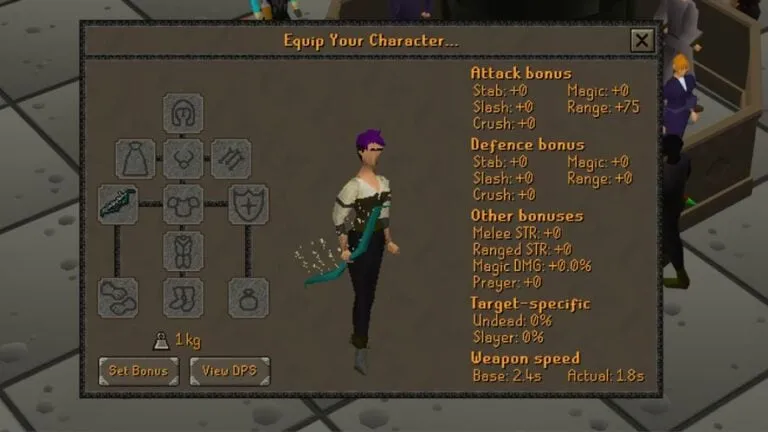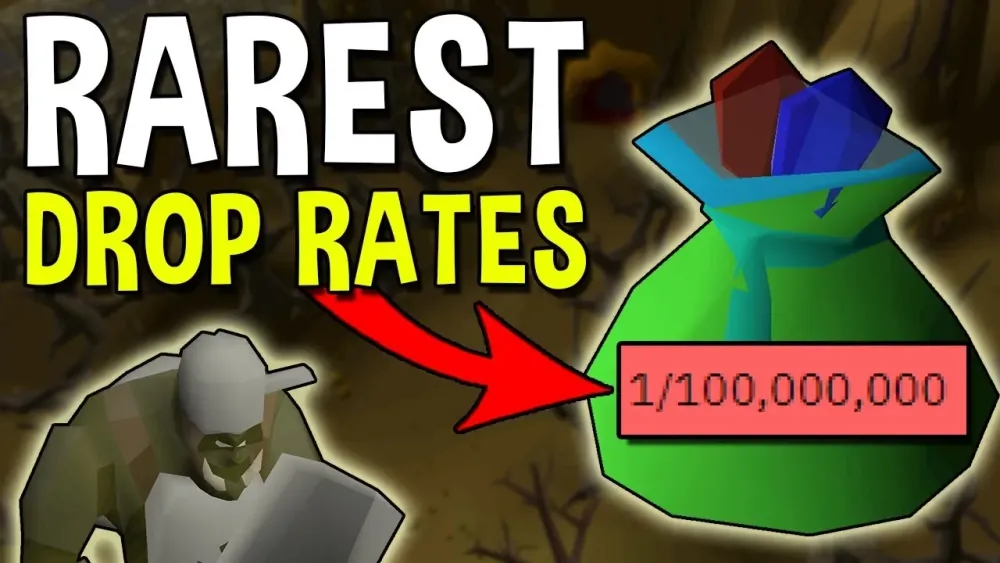Your cart is empty
OSRS Leagues Drop Rate Guide Boosted Rewards Explained

Old School RuneScape (OSRS) Leagues are a thrilling, time-limited game mode that transforms the traditional gameplay experience with accelerated progression, unique restrictions, and significantly boosted drop rates. For players diving into Leagues, understanding how drop rates work is crucial to maximizing rewards and enjoying the fast-paced grind. This comprehensive guide explores the mechanics of drop rates in OSRS Leagues, focusing on the Raging Echoes League (November 27, 2024 – January 22, 2025), and provides actionable insights to optimize your loot-hunting strategy. Whether you’re chasing rare uniques or aiming for efficient progression, this post will help you navigate the boosted drop rate system.
In OSRS Leagues, drop rates are enhanced to make rare items more accessible, aligning with the mode’s temporary, high-energy nature. Unlike the main game, where drop rates can be grind-intensive (e.g., 1/512 for a Primordial Crystal from Cerberus), Leagues introduce multipliers that increase the likelihood of obtaining unique items. These boosts are tied to relic tiers, which players unlock by completing tasks and earning League Points. The Raging Echoes League, the fifth iteration, exemplifies this system with a structured drop rate multiplier that scales with progression.
How Drop Rate Multipliers Work
Drop rate multipliers in Leagues apply to specific items, typically unique drops that cannot be crafted, such as boss-specific gear or rare resources. The multiplier increases as players unlock higher relic tiers, making items progressively easier to obtain. For example, in the Raging Echoes League, the drop rate multiplier starts at 2x at Tier 1 and reaches 5x at Tier 4, significantly reducing the grind for coveted items like the Scythe of Vitur or Ancestral Robes.
Comparison with Main Game Drop Rates
In the main game, drop rates for high-value items can be daunting. For instance, the Elysian Sigil from Corporeal Beast has a base drop rate of 1/4,096, requiring hundreds of hours for a reasonable chance at success. In Leagues, with a 5x multiplier, this effectively becomes 1/819.2, making it far more achievable within the eight-week timeframe. This comparison highlights why Leagues are a favorite for players seeking rare loot without the long-term commitment.
Raging Echoes League Drop Rate Mechanics

The Raging Echoes League, which ran from November 27, 2024, to January 22, 2025, introduced several enhancements to drop rate mechanics, building on the Trailblazer Reloaded framework. With new features like Echo Bosses and Combat Masteries, the League offered unique opportunities for loot acquisition.
Relic Tier Progression and Drop Rate Boosts
The drop rate multiplier in Raging Echoes scales with relic tiers, as outlined below:
| Relic Tier | Drop Rate Multiplier | Key Items Affected |
|---|---|---|
| Tier 1 | 2x | Unique boss drops, minigame rewards |
| Tier 4 | 5x | Twisted Ancestral Kits, Scythe of Vitur, Awakener’s Orbs |
Unlocking Tier 4 is a game-changer, as the 5x multiplier applies to high-value items like ornament kits and raid uniques, making them more attainable for mid-to-late game players.
Echo Bosses and Exclusive Drops
Raging Echoes introduced Echo Bosses, enhanced versions of familiar foes with a chance to drop powerful equipment. These bosses, unique to each region, benefit from the League’s drop rate multiplier, making their exclusive loot more accessible. For example, the Echo version of Verzik Vitur in Morytania may drop the Scythe of Vitur at a boosted rate, incentivizing players to tackle these challenging encounters.
Strategies to Maximize Drop Rate Benefits

To make the most of boosted drop rates, players need a strategic approach to task completion, region selection, and boss farming. Here are some proven tactics:
Prioritize Relic Tier Progression
Focus on completing tasks to unlock Tier 4 relics as quickly as possible. Tasks range from Easy to Master, with higher difficulties yielding more League Points. For example, completing “Kill 100 Spitting Wyverns” in Varlamore grants significant points, accelerating your path to the 5x multiplier.
Choose Regions Wisely
Players can unlock three additional regions beyond Misthalin and Karamja. Select regions with bosses or activities that align with your goals. For instance, unlocking Morytania grants access to the Theatre of Blood, where the 5x multiplier boosts the Scythe of Vitur drop rate.
Farm Echo Bosses Efficiently
Echo Bosses are prime targets for rare loot. Use Combat Masteries, introduced in Raging Echoes, to enhance your damage output and survivability. For example, the Melee Mastery can make short work of the Echo version of Cerberus, increasing your chances of securing a Primordial Crystal.
Common Drop Rate Misconceptions
Despite the clear benefits of boosted drop rates, some players encounter frustration due to misconceptions or unrealistic expectations. Addressing these can help set realistic goals.
Myth: All Drops Are Boosted
Not every item benefits from the drop rate multiplier. Only unique, non-craftable items from eligible sources (e.g., bosses, minigames) are affected. For example, while the Granite Longsword from Wyverns is boosted, common resources like logs are not. Always check the OSRS Wiki for specific drop tables.
Myth: Boosted Rates Guarantee Drops
Even with a 5x multiplier, RNG plays a significant role. A 1/600 drop rate becoming 1/120 still requires luck. Players farming Spitting Wyverns for a Granite Longsword, as noted in Reddit discussions, may go dry despite the boost, but the odds are significantly improved compared to the main game.
Community Feedback and Drop Rate Challenges
The OSRS community has been vocal about drop rates in Leagues, with both praise and criticism. Understanding these perspectives can help players manage expectations and advocate for future improvements.
Player Complaints About Dry Streaks
Some players, particularly in private servers like Alora, have reported underwhelming drop rates for raids and Barrows, even with multipliers. For example, one player noted going 40 kills dry at Chambers of Xeric with Tier 7 relics, highlighting the frustration of RNG in a temporary mode. These sentiments echo in Raging Echoes, where solo players sometimes feel disadvantaged compared to teams.
Jagex’s Response to Feedback
Jagex has adjusted drop rates in response to feedback. In Raging Echoes, the drop rate for purples in solo raids was reduced from 3x to 2x to balance team-based rewards, while Chambers of Xeric remained untouched. Hotfixes, like those for Revenant weapons and Phantom Muspah uniques, also addressed specific drop rate issues, showing Jagex’s commitment to refining the experience.
Key Takeaways for OSRS Leagues Drop Rates:
- Drop rate multipliers scale with relic tiers, reaching 5x at Tier 4 in Raging Echoes.
- Echo Bosses offer exclusive loot with boosted drop rates, making them prime targets.
- Focus on task completion and region selection to unlock higher multipliers early.
- Only unique, non-craftable items benefit from drop rate boosts—check the OSRS Wiki for specifics.
- RNG can still lead to dry streaks, but boosted rates significantly improve odds compared to the main game.
By leveraging the boosted drop rates in OSRS Leagues, particularly in Raging Echoes, players can acquire rare items like the Scythe of Vitur or Ancestral Robes with far less grind than in the main game. Prioritize relic progression, target Echo Bosses, and stay informed about eligible drops to maximize your rewards. While RNG can be a hurdle, the enhanced drop rates make Leagues an exciting opportunity to experience OSRS’s most coveted loot in a condensed, high-energy format. Dive into the grind, and may the RNG gods favor you!
